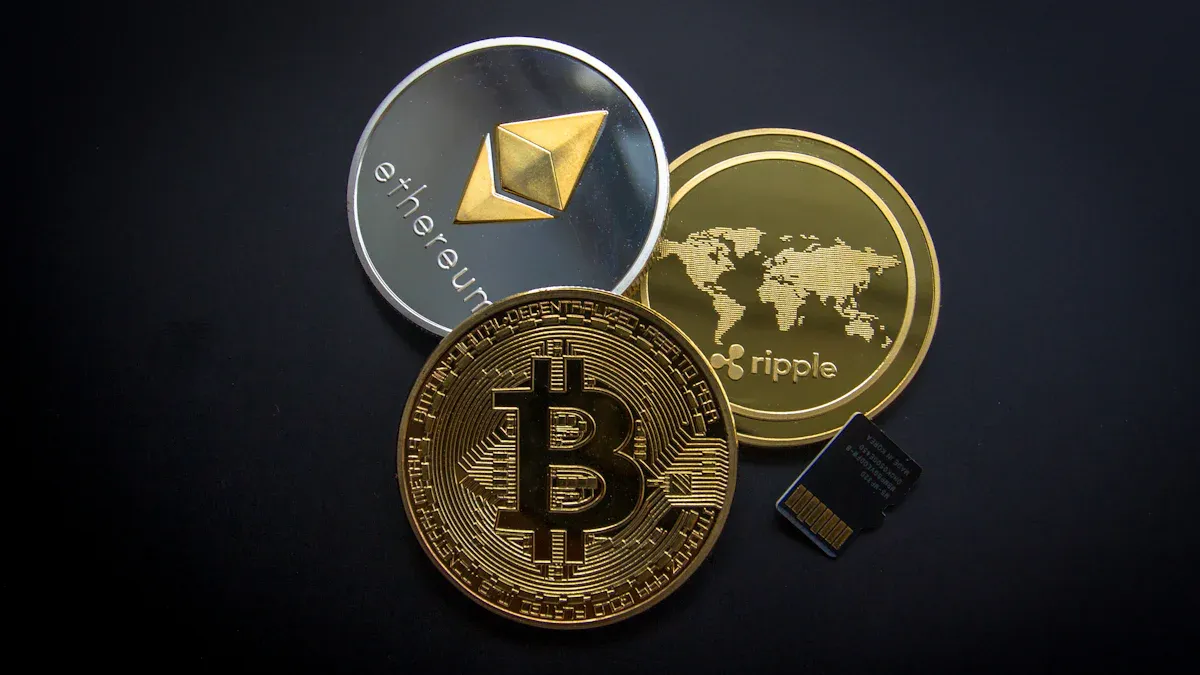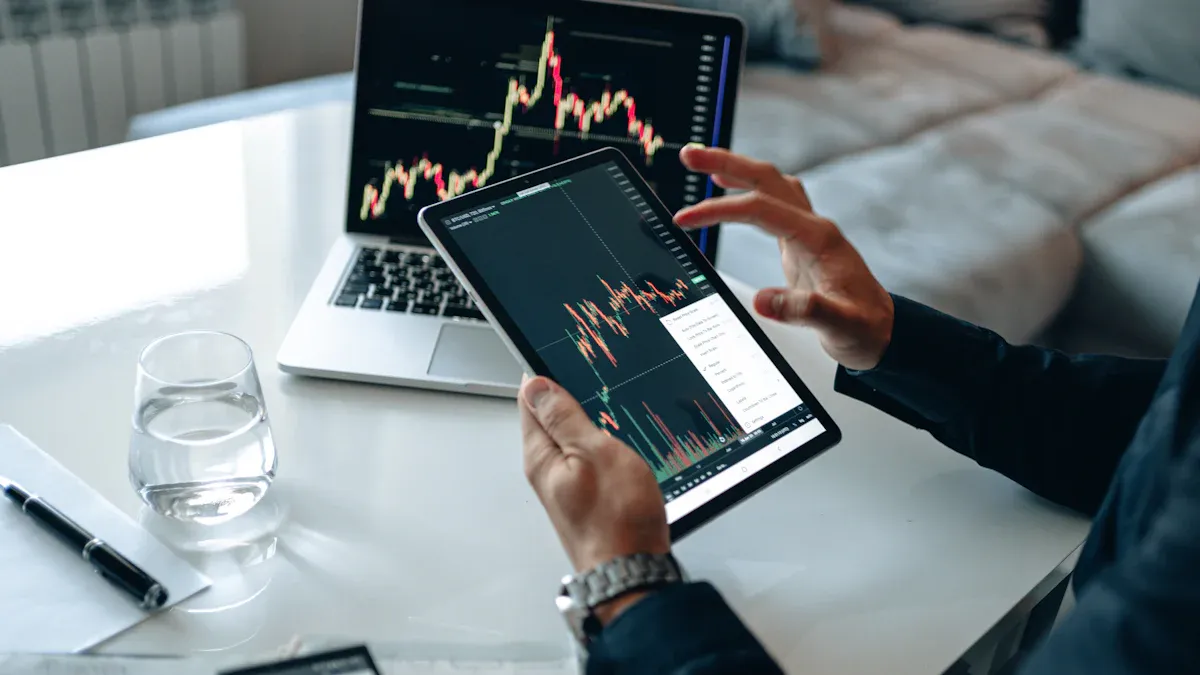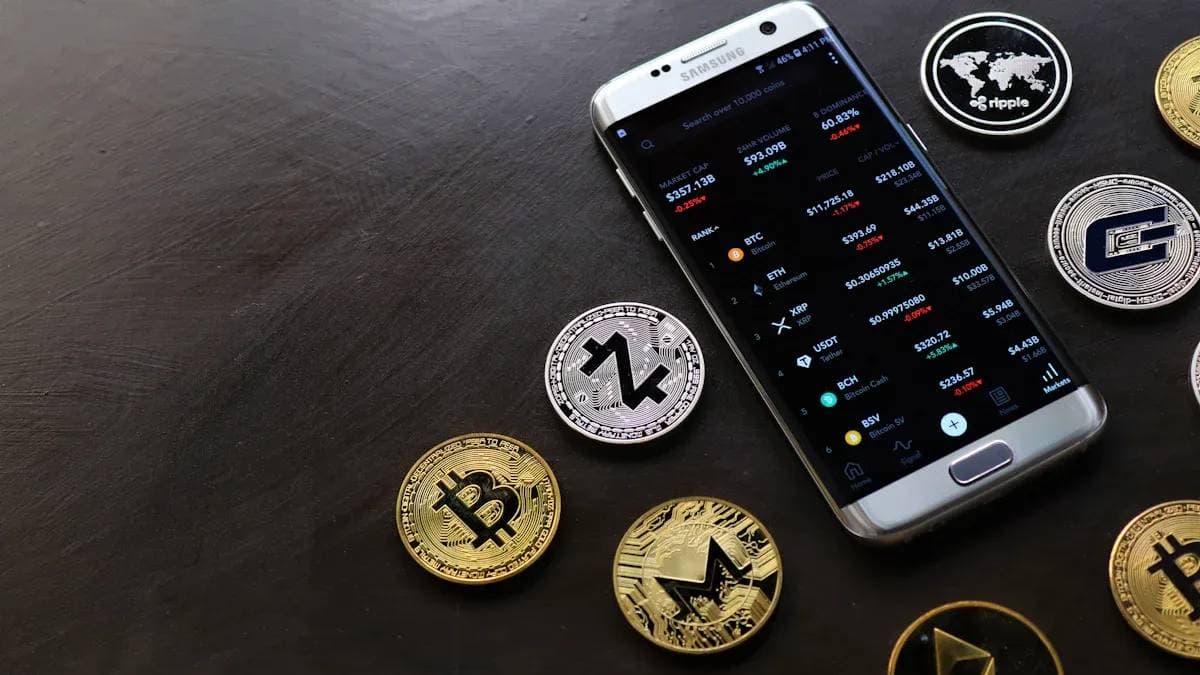- EasyCard
- Trade
- Help
- Announcement
- Academy
- SWIFT Code
- Iban Number
- Referral
- Customer Service
- Blog
- Creator
Why Are Your USDT Remittance Fees So High? The Problem Might Be Here

Image Source: pexels
Why are your stablecoin USDT remittance fees so expensive? The problem may not only be in the transfer stage. As more and more people (such as 26% of US remittance users) start using stablecoins, these hidden costs become more prominent.
You think it’s just the shipping fee that’s expensive, but actually when buying the packaging box (purchasing USDT), you may have already spent extra money.
This article will take you through a complete breakdown of the full-chain fees from purchase to transfer and provide a set of immediately usable money-saving strategies to help you eliminate all unnecessary expenses.
Key Points
- USDT remittance fees are high mainly due to blockchain network fees and exchange withdrawal fees.
- When purchasing USDT, credit card payments and high spreads add hidden costs; bank transfers are more cost-effective.
- Choosing the TRC20 network for USDT transfers is the most economical, with low fees and fast speed.
- Before transferring, be sure to verify the recipient address and network type to avoid loss of funds.
Deconstructing Stablecoin USDT Remittance Fees

Image Source: pexels
To understand why your stablecoin USDT remittance fees are high, you first need to break down their composition. Fees mainly come from two parts: the “network fee” charged by the blockchain network and the “withdrawal fee” charged by the trading platform. Let’s analyze them one by one.
Network Fee (Gas Fee): The Main Source of Fees
Every USDT transfer you make requires paying a fee to the miners or validators on the blockchain network. This fee is the network fee, often called “Gas Fee”. It is not a fixed number but changes dynamically like highway tolls based on “traffic conditions”.
Network congestion is the direct cause of Gas fee spikes. When a large number of users initiate transactions at the same time, it creates a “bidding war” for limited block space. The higher the bid, the faster your transaction is processed.
This mechanism means that the busier the network, the higher the fees. For example, the Ethereum (ERC20) network is widely used and often congested, leading to high Gas fees. Even the usually low-fee TRON network is not always cheap. At the end of 2024, the network experienced congestion due to increased activity, causing a single USDT transfer fee to unexpectedly surge to 9 USD.
Platform Withdrawal Fee: Service Fee Charged by the Exchange
In addition to the network fee, when you withdraw USDT from an exchange, the platform itself charges a “withdrawal fee”. This fee is independent of the Gas fee and is set by the exchange to cover its operational costs.
Exchanges charge withdrawal fees mainly for two reasons:
- Covering operational costs: This fee helps the platform maintain daily operations, including account verification, security system maintenance, fraud protection, and compliance checks.
- Paying network fees: Some exchanges use the withdrawal fees paid by users directly to cover on-chain Gas fees. Some platforms charge a fixed amount, while others may slightly mark up the actual network fee as a revenue source.
Therefore, when choosing an exchange, you need to pay attention to both its withdrawal fee rate and the supported network types, as these two together determine your final cost.
Avoid “Hidden Charges” in Purchasing and Exchanging
Before complaining about high stablecoin USDT remittance fees, first review how you obtained these USDT. Many times, unnecessary expenses start from the “purchase” step. Transfer fees are the “open gun,” while hidden charges in the purchase stage are the “hidden arrow,” equally causing you significant losses.
Beware of Spread Losses Behind “Zero Fees”
You may be attracted by some platforms advertising “zero fees”. But there’s no free lunch. Although these platforms do not charge direct fees, they profit by setting higher buying prices and lower selling prices; the difference is the “spread”.
Even if the platform advertises “zero fees,” you may lose about 2% of your funds due to high spreads. This means that with 1000 USD to purchase USDT, you might actually get only 980 USDT.
This cost is hidden, but it genuinely reduces your principal.
Credit Card Purchases: Convenient but Expensive Option
Buying coins with a credit or debit card is undoubtedly one of the most convenient and quick methods, but it is also the most costly option. Third-party payment gateways like MoonPay can charge credit card payment fees up to 4.5%.
Why so expensive? Because this fee is compounded:
- Payment gateway fee: Service fee charged by third-party providers (such as MoonPay, Simplex).
- Credit card cash advance fee: Most card issuers treat cryptocurrency purchases as “cash advances,” charging an additional 3%-5% fee, with interest accruing from the transaction day without a grace period.
When combined, your purchase cost rises sharply, easily exceeding 5%.
Make Good Use of Fiat Channels: Reduce Exchange Costs
To save money from the source, the most effective method is to make good use of low-cost fiat channels, namely bank transfers. Although slower than credit cards, the fees are much lower.
- European users: Can choose platforms supporting SEPA (Single Euro Payments Area) transfers, with fees usually 0, or only a small fee charged by the bank.
- US users: Can choose platforms supporting ACH transfers, similarly enjoying extremely low transaction fees.
- Users in other regions: Many platforms (such as Biyapay) also offer localized bank transfer solutions. For example, you can transfer via a Hong Kong licensed bank account, with fees far lower than credit card payments.
Choosing bank transfers means controlling purchase costs to 1% or even lower, saving plenty of “ammunition” for subsequent transfers.
USDT Network Comparison: The Key to Fee Differences
Before paying transfer fees, you need to make a key choice: which blockchain network to use to send your USDT? USDT does not exist on only one network; it is like a “cross-platform” digital currency that can run on multiple blockchains. Your choice directly determines the transfer speed and fees.
Below, we compare in detail the three most mainstream USDT networks: ERC20, TRC20, and OMNI.
ERC20-USDT: Secure but Expensive Ethereum Network
ERC20-USDT is USDT issued on the Ethereum network. Ethereum is currently the most widely used blockchain with the most prosperous ecosystem, and its security has the broadest consensus.
But this top-level security comes at a cost. Fees (Gas Fee) on the Ethereum network are notoriously high and unstable.
Gas fees are the core of Ethereum’s security mechanism. The fees you pay reward those who validate transactions and maintain network security. This mechanism effectively prevents malicious attackers from paralyzing the network by sending massive spam transactions. Simply put, you pay an “insurance premium” for top security.
When the network is not congested, a single ERC20-USDT transfer fee might be around a few dollars. For example, historical data shows that single transfer fees have been as low as 1.31 USD. But during market booms and network congestion, this fee can easily surge to tens or even hundreds of dollars.
Advantages:
- Highest security: Backed by the most powerful Ethereum network, asset security is guaranteed.
- Widest application: Supported by almost all exchanges and wallets.
Disadvantages:
- High fees: The most expensive among the three networks.
- Slower speed: Transaction confirmation usually takes tens of seconds to minutes.
If you are making large transfers and prioritize security above all, ERC20 might be a safe choice. But for daily small remittances, its cost is clearly too high.
TRC20-USDT: The Top Choice for Low-Cost Remittance
TRC20-USDT is USDT issued on the TRON network. Its emergence is to solve the high fees and slow speed of ERC20. For users pursuing low cost and high efficiency, TRC20 is currently the best choice.
Its core advantages are very prominent: cheap and fast.
- Extremely low fees: In most cases, a single TRC20-USDT transfer fee is below 2 USD, sometimes even less than 1 USD. The chart below shows that TRC20 fees remain at extremely low levels under different conditions.
This fee forms a stark contrast with traditional finance. Traditional bank wire transfer fees are usually between 15-50 USD, and cross-border remittance fees can even reach 85 USD. In comparison, the stablecoin USDT remittance fees on the TRC20 network are almost negligible. - Lightning speed: The TRON network has extremely high processing capacity (TPS), making transactions almost instantaneous.
As shown in the chart above, TRC20’s transaction speed (about 2000 TPS) is dozens of times that of ERC20 (about 30 TPS), with transaction confirmation usually completed within 3 seconds, while ERC20 takes longer. This means your funds reach the other party faster.
Conclusion: For the vast majority of individual users and small to medium remittance scenarios, the TRC20 network has overwhelming advantages in cost and efficiency.
OMNI-USDT: Outdated Network to Avoid
OMNI is the earliest network where USDT was born, based on the Bitcoin blockchain. Although it is a historical pioneer, it is now completely outdated.
The OMNI network has several fatal disadvantages:
- Extremely high fees: Its transfer fees are linked to the Bitcoin network, usually more expensive than ERC20.
- Extremely slow speed: A transaction confirmation may take tens of minutes to hours.
- Being phased out: Due to continuously declining usage, USDT issuer Tether has announced gradual cessation of support for the OMNI network and shifting resources to more efficient blockchains.
You can think of the OMNI network as “dial-up internet” in the digital currency world. In an era where broadband and fiber optics are widespread, there is no reason to choose it.
Therefore, when transferring USDT, you should actively avoid using the OMNI network to avoid paying unnecessary high fees and enduring long waits.
Practical Strategies to Reduce Fees

Image Source: pexels
After understanding the fee composition and network differences, it’s time to turn knowledge into action. Follow the three simple but extremely effective strategies below, and you can significantly reduce your stablecoin USDT remittance fees, making every transaction more cost-effective.
Strategy 1: Choose Low-Cost Purchase Methods
The first step to saving money starts with how you “buy” USDT. Instead of nitpicking over subsequent transfer fees, eliminate unnecessary high expenses from the source.
-
Prefer bank transfers: This is the most direct and effective money-saving method. Abandon high-fee credit card payments and choose platforms that support bank transfers. For example, you can use platforms like Biyapay to transfer via supported Hong Kong licensed bank accounts, controlling purchase costs to 1% or even lower.
-
Explore P2P (peer-to-peer) markets: P2P markets allow you to trade directly with other users, sometimes finding better rates than the market price. Some mainstream platforms offer competitive options for users with different needs.
Platform Name Competitive Rate Advantage OKX Through its Block Trade feature, provides highly competitive rates for purchases over 10,000 USD with no extra fees. Binance Good market depth, sometimes allowing users to buy USDT at below-market prices through limit orders, creating arbitrage opportunities. Bybit After completing identity verification (KYC) and claiming coupons, offers more favorable rates. BingX Suitable for small purchases, usually providing decent market rates.
Important Tip: Beware of P2P Trading Risks Although P2P trading offers flexibility and potential low costs, it also comes with specific risks. Before trading, you must understand how to protect yourself.
| Risk Type | Description | Mitigation Measures |
|---|---|---|
| Fake Payment Proof | Fraudsters send forged payment screenshots or SMS to trick you into releasing USDT early. | Must personally log into your bank account or payment app to confirm funds have actually arrived before proceeding. |
| Malicious Refund Fraud | The other party uses a third-party account for payment and, after receiving your USDT, maliciously initiates a refund through the original payment platform. | Firmly refuse any payments from non-real-name third-party accounts. |
| Bank Account Freeze | Your bank account may be frozen and investigated by authorities for receiving funds from unknown sources. | Do not use your main salary or savings card for P2P trading. It is recommended to use a separate bank card and keep low balances in it. |
Strategy 2: Prioritize TRC20 Network for Transfers
When preparing to send USDT, choosing the correct transfer network is crucial. For the vast majority of individual users, the answer to this choice is simple: always prioritize the TRC20 network.
The TRC20 network has overwhelming advantages in cost and efficiency.
- Significant cost savings: TRC20 fees are far lower than ERC20. Let’s look at a direct comparison.
A case study shows that a user transferring 1,000 USDT during peak hours saved 28 USD in fees using the TRC20 network compared to ERC20.Network Average Fee (USD) TRON (TRC-20) $0.315 Ethereum (ERC-20) $1.15 (can surge to over $30) - Lightning speed: TRC20 transactions can be completed within 3 minutes, while ERC20 may require waiting over 15 minutes.
You might worry about TRC20 compatibility. In fact, USDT on the TRON network (TRC20-USDT) is already accepted by almost all mainstream exchanges, wallets, and payment systems. For example, platforms like XREX and CoinZoom explicitly support TRC20-USDT deposits and withdrawals, so you can use it with confidence.
How to select the TRC20 network on the platform? The operation process is generally similar, usually just a few simple steps. Taking withdrawal in an app like Biyapay as an example:
- Log into your account and go to the “wallet” or “assets” page.
- Select USDT and click the “withdraw” button.
- After entering the withdrawal address and amount, you will see a “select network” option.
- Here, explicitly choose the “TRC20 (TRON)” network, then confirm the withdrawal.
Strategy 3: Verify Address Format to Avoid Asset Loss
After selecting the network, the final and most critical step is: repeatedly verify the recipient address. Sending USDT to an incompatible network address is like using a Beijing subway ticket in Shanghai’s subway system; it cannot be recognized, and your funds may be permanently lost.
USDT address formats on different networks are vastly different. Remember the following characteristics as your checklist:
| USDT Network | Address Format Feature | Example |
|---|---|---|
| TRC20 (TRON) | Starts with uppercase T | T9zP14… |
| ERC20 (Ethereum) | Starts with 0x | 0xbd7e… |
| OMNI (Bitcoin) | Starts with 1 or 3 | 183hmJGRu… |
Final Safety Line Before clicking the “send” or “withdraw” button, confirm again:
- Does the network you selected (e.g., TRC20) exactly match the address type provided by the other party (starting with
T)?- If the other party gives you an address starting with
0xbut you selected the TRC20 network, the transaction will fail, and your assets will face unrecoverable risk.
Careful checking is the only way to avoid losses. Developing this habit can save you countless troubles.
To truly save on your USDT remittance fees, you need to pay attention to both the “purchase” and “transfer” stages. Follow this simple action checklist, and you can save most unnecessary expenses.
- When purchasing: Avoid credit cards and prioritize bank transfers.
- When transferring: Always choose the TRC20 network.
Why is this choice so important? Traditional bank wire transfer fees are usually between 15 USD and 50 USD, while TRC20-USDT transfer fees are often below 1 USD.
From today, manage every USDT transaction like a pro, making every penny count.
FAQ
Why is the TRC20 network so cheap?
TRC20 is based on the TRON network, whose design goal is high speed and low cost. It processes transactions much more efficiently than the Ethereum network. Therefore, the network fees you pay for transfers on TRC20 are naturally very low, usually less than 1 USD.
What happens if I send USDT to the wrong type of address?
Your funds will face the risk of permanent loss.
For example, you cannot send TRC20-USDT (address starting with T) to an ERC20 address (starting with 0x). The blockchain network cannot recognize this erroneous operation; the transaction will fail, and funds are almost impossible to recover.
Is buying coins with a credit card really not cost-effective?
Yes. Although buying coins with a credit card is very convenient, it is one of the most expensive purchase methods. Including payment gateway and possible bank fees, your total cost can easily exceed 5%. To save money, you should prioritize low-cost methods like bank transfers.
How do I know which network the recipient is using?
You must directly ask the recipient. Before transferring, be sure to confirm two things with the other party:
- Which network’s USDT they wish to receive (e.g., TRC20).
- Whether the recipient address format they provided matches the network (e.g., TRC20 address starts with
T).
*This article is provided for general information purposes and does not constitute legal, tax or other professional advice from BiyaPay or its subsidiaries and its affiliates, and it is not intended as a substitute for obtaining advice from a financial advisor or any other professional.
We make no representations, warranties or warranties, express or implied, as to the accuracy, completeness or timeliness of the contents of this publication.




Contact Us
Company and Team
BiyaPay Products
Customer Services
BIYA GLOBAL LLC is a licensed entity registered with the U.S. Securities and Exchange Commission (SEC No.: 802-127417); a certified member of the Financial Industry Regulatory Authority (FINRA) (Central Registration Depository CRD No.: 325027); regulated by the Financial Industry Regulatory Authority (FINRA) and the U.S. Securities and Exchange Commission (SEC).
BIYA GLOBAL LLC is registered with the Financial Crimes Enforcement Network (FinCEN), an agency under the U.S. Department of the Treasury, as a Money Services Business (MSB), with registration number 31000218637349, and regulated by the Financial Crimes Enforcement Network (FinCEN).
BIYA GLOBAL LIMITED is a registered Financial Service Provider (FSP) in New Zealand, with registration number FSP1007221, and is also a registered member of the Financial Services Complaints Limited (FSCL), an independent dispute resolution scheme in New Zealand.



















